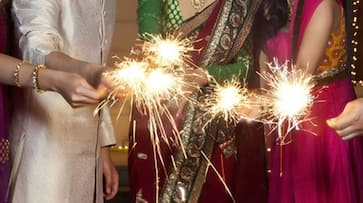From north to south India, here are the reasons why lamps are lit during Diwali or Deepavali as it is called in the south.
Lights form an important part of Diwali festival. The word Diwali is said to be derived from the Sanskrit word Dipa (lamp) and Vali (row), thus meaning row of lamps. In fact, in south India, the festival is known as Deepavali.
According to legends, in north India, people relate the festival to the arrival of Lord Ram. He was sent to exile with his wife Sita and brother Lakshman and people kept on waiting for the return of their king for 14 years. When Lord Ram returned to Ayodhya after 14 years, people welcomed him home by lighting lamps. Thus, it became a tradition and people lit lamps in remembrance of the day when Lord Ram returned home.
But in south India, lamps are lit in remembrance of Goddess Durga's victory over Narakasura, who was a demon. Thus lights are lit on the first day of Diwali that is known as Naraka Chaturdashi. Lighting lamps on this day symbolises purity, goodness and victory of good over evil.
In fact, as the festival of lights is celebrated on the new moon day, it also symbolises eradicating darkness through light. There are also beliefs that evil forces become powerful during new moon day. Thus lighting the lamps also signifies keeping the evil forces away from the house and family.
Also watch: 7 safety precautions to keep children safe while bursting firecrackers
Last Updated Nov 7, 2018, 10:58 AM IST









![Salman Khan sets stage on fire for Anant Ambani, Radhika Merchant pre-wedding festivities [WATCH] ATG](https://static-gi.asianetnews.com/images/01hr1hh8y86gvb4kbqgnyhc0w0/whatsapp-image-2024-03-03-at-12-24-37-pm_100x60xt.jpg)
![Pregnant Deepika Padukone dances with Ranveer Singh at Anant Ambani, Radhika Merchant pre-wedding bash [WATCH] ATG](https://static-gi.asianetnews.com/images/01hr1ffyd3nzqzgm6ba0k87vr8/whatsapp-image-2024-03-03-at-11-45-35-am_100x60xt.jpg)


